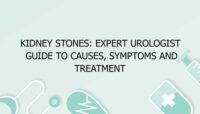Bell’s Palsy is a sudden, temporary paralysis or weakness on one side of the face, resulting from inflammation of the facial nerve (cranial nerve VII). This condition can cause a range of symptoms that impact facial movement and sensation, often creating significant concern for those affected. The exact cause of Bell’s Palsy is not entirely understood, but it is believed to be associated with viral infections and autoimmune responses. While it can be alarming to experience facial weakness or droop, most individuals with Bell’s Palsy recover fully within a few months. Understanding the causes, symptoms, treatment options, and types of Bell’s Palsy is essential for managing the condition effectively and providing appropriate care.
Causes of Bell’s Palsy
The exact cause of Bell’s Palsy remains unknown, but it is thought to be linked to viral infections. The condition is believed to occur when the facial nerve becomes inflamed, possibly due to a viral infection, leading to facial weakness or paralysis. Several viruses have been associated with Bell’s Palsy, including the herpes simplex virus (HSV), which causes cold sores, and the varicella-zoster virus (VZV), which causes chickenpox and shingles. Other potential viral triggers include the Epstein-Barr virus (EBV) and the cytomegalovirus (CMV). In addition to viral infections, some researchers suggest that autoimmune reactions, where the immune system mistakenly attacks the facial nerve, may play a role. Genetic predisposition, stress, and environmental factors may also contribute to the development of Bell’s Palsy. Despite extensive research, the exact interplay of these factors and their role in causing Bell’s Palsy is still under investigation.
Symptoms of Bell’s Palsy
The symptoms of Bell’s Palsy typically appear suddenly and can vary in severity. The most common symptom is sudden facial weakness or paralysis on one side of the face. This can manifest as drooping of the mouth, eyelid, or eyebrow, and difficulty with facial expressions, such as smiling or frowning. Other symptoms may include a loss of the sense of taste on the affected side, increased sensitivity to sound, and pain or discomfort around the jaw or behind the ear. Some individuals may also experience excessive tearing or drooling. Although the condition primarily affects facial movement, it may occasionally be accompanied by headaches or a feeling of stiffness in the neck. In most cases, the symptoms reach their peak within a few days and gradually improve over several weeks. It is important to seek medical attention if these symptoms occur, as early intervention can help manage the condition and rule out other potential causes of facial paralysis.
Treatment of Bell’s Palsy
Treatment for Bell’s Palsy focuses on reducing inflammation, relieving symptoms, and promoting recovery. The primary treatment often involves corticosteroids, such as prednisone, to reduce inflammation and swelling of the facial nerve. These medications are most effective when started within the first few days of symptom onset. In addition to corticosteroids, pain management may be necessary, with options including over-the-counter pain relievers or prescription medications for severe pain. Physical therapy is often recommended to help improve facial muscle strength and coordination. Techniques such as facial exercises, massage, and heat application can aid in restoring normal facial movements. In some cases, antiviral medications may be prescribed if a viral infection is suspected to be the underlying cause. Most individuals with Bell’s Palsy recover fully within three to six months, although some may experience residual weakness or minor facial asymmetry. Regular follow-up with healthcare providers ensures appropriate management and monitoring of progress.
Types of Bell’s Palsy
Bell’s Palsy can be categorized based on the severity and clinical presentation of facial weakness. While there is no formal classification system, understanding these variations can help in managing the condition:
- Classical Bell’s Palsy: This is the most common type, characterized by sudden onset of unilateral facial weakness or paralysis without an identifiable cause other than possible viral infection. Symptoms typically peak within a few days and gradually improve over weeks to months.
- Bell’s Palsy with Severe Weakness: In some cases, Bell’s Palsy presents with more severe facial weakness or paralysis, which can significantly impact daily functions such as eating, speaking, and facial expressions. This severe form may require more intensive treatment and rehabilitation.
- Bell’s Palsy with Associated Symptoms: Some individuals may experience additional symptoms alongside facial weakness, such as pain around the jaw or ear, excessive tearing, or changes in taste. These associated symptoms can affect the overall management and recovery process.
- Bell’s Palsy with Incomplete Recovery: Although most individuals recover fully, some may experience residual weakness or facial asymmetry even after the initial recovery period. This type may require ongoing treatment and therapy to address persistent issues.
- Bilateral Bell’s Palsy: Although rare, some individuals may experience facial weakness on both sides of the face simultaneously. This presentation requires careful evaluation to determine the underlying cause and appropriate management.
FAQ Section
What is Bell’s Palsy and what causes it?
Bell’s Palsy is a neurological condition characterized by sudden, temporary paralysis or weakness on one side of the face, resulting from inflammation of the facial nerve (cranial nerve VII). The exact cause of Bell’s Palsy is not completely understood, but it is commonly associated with viral infections. The herpes simplex virus (HSV), which causes cold sores, is often implicated, as are other viruses like varicella-zoster virus (VZV), Epstein-Barr virus (EBV), and cytomegalovirus (CMV). Some researchers also suggest that autoimmune reactions, where the immune system mistakenly attacks the facial nerve, might play a role. Genetic predisposition and environmental factors such as stress may also contribute to the development of Bell’s Palsy. The inflammation of the facial nerve leads to a disruption in the nerve’s function, resulting in the characteristic facial weakness or paralysis.
How can I recognize the symptoms of Bell’s Palsy?
The symptoms of Bell’s Palsy typically appear suddenly and primarily involve facial weakness or paralysis on one side of the face. This weakness can affect various parts of the face, including the mouth, eyelid, and eyebrow, leading to drooping and difficulty with facial expressions. Other common symptoms include a loss of the sense of taste on the affected side, increased sensitivity to sound, and pain or discomfort around the jaw or behind the ear. Individuals may also experience excessive tearing or drooling. The onset of symptoms is usually rapid, reaching their peak within a few days. It is essential to recognize these symptoms early and seek medical attention, as prompt diagnosis and treatment can improve outcomes and rule out other potential causes of facial paralysis.
What are the main treatment options for Bell’s Palsy?
Treatment for Bell’s Palsy primarily focuses on reducing inflammation, relieving symptoms, and facilitating recovery. The mainstay of treatment involves corticosteroids, such as prednisone, which help to reduce inflammation and swelling of the facial nerve. These medications are most effective when administered early in the course of the illness. Pain management is also important, and over-the-counter pain relievers or prescription medications may be used to address discomfort. Physical therapy can aid in restoring facial muscle strength and coordination, with techniques including facial exercises, massage, and heat application. In some cases, antiviral medications may be prescribed if a viral infection is suspected to be the underlying cause. Most individuals experience a gradual recovery, but some may have residual weakness or facial asymmetry. Regular follow-up with healthcare providers ensures appropriate management and monitoring of progress.
How long does it take to recover from Bell’s Palsy?
The recovery time for Bell’s Palsy varies among individuals, but most people experience significant improvement within three to six months. The condition often follows a pattern where symptoms peak within a few days and gradually improve over several weeks. Full recovery is common, but some individuals may continue to experience mild residual weakness or facial asymmetry. Factors such as the severity of initial symptoms, the promptness of treatment, and individual health can influence the recovery timeline. Early intervention with corticosteroids and physical therapy can enhance the likelihood of a full recovery. Regular follow-up with healthcare providers is important to monitor progress and address any ongoing issues.
Can Bell’s Palsy recur or affect both sides of the face?
Bell’s Palsy generally affects only one side of the face at a time, but it is possible for the condition to recur on the same side or affect the opposite side in the future. Recurrence is relatively uncommon, but individuals who have had Bell’s Palsy are at a slightly higher risk of experiencing it again. In rare cases, Bell’s Palsy can present with facial weakness on both sides of the face simultaneously, known as bilateral Bell’s Palsy. This presentation requires careful evaluation to determine the underlying cause and appropriate management. Most cases of Bell’s Palsy are unilateral, and recurrence is typically managed with similar treatment approaches as the initial episode.
What are the possible complications of Bell’s Palsy?
While most individuals with Bell’s Palsy recover fully, some may experience complications or residual effects. Potential complications include persistent facial weakness or asymmetry, which can impact facial expressions and daily activities. In some cases, individuals may also experience ongoing pain or discomfort around the jaw or ear. Other complications can include issues with eye closure, leading to dryness or irritation, and problems with swallowing or speech. The psychological impact of Bell’s Palsy, such as anxiety or depression, can also affect quality of life. Early treatment and ongoing management can help address these complications and improve overall outcomes.
Is Bell’s Palsy related to other health conditions?
Bell’s Palsy is generally considered an isolated condition affecting the facial nerve, but it can sometimes be associated with other health conditions. For instance, individuals with a history of certain viral infections, such as herpes simplex virus (HSV) or varicella-zoster virus (VZV), may be more susceptible to Bell’s Palsy. Additionally, conditions that weaken the
immune system or cause systemic inflammation, such as diabetes or autoimmune disorders, may increase the risk of developing Bell’s Palsy. It is important to consider these associations when evaluating a patient with Bell’s Palsy and to address any underlying health conditions that may influence the course or management of the condition.
Can lifestyle changes or home remedies help manage Bell’s Palsy?
While medical treatment is the primary approach for managing Bell’s Palsy, certain lifestyle changes and home remedies can complement conventional care and improve overall well-being. Maintaining a healthy lifestyle, including a balanced diet and regular exercise, can support the body’s healing processes. Gentle facial exercises and massage may help improve facial muscle strength and coordination. Applying warm compresses to the affected side of the face can alleviate discomfort and promote relaxation. Stress management techniques, such as relaxation exercises or mindfulness, may also be beneficial, as stress can potentially impact the immune system. It is important to discuss any home remedies or lifestyle changes with a healthcare provider to ensure they are safe and appropriate for the individual’s condition.
How can physical therapy help with Bell’s Palsy?
Physical therapy plays a crucial role in the rehabilitation process for individuals with Bell’s Palsy. The primary goal of physical therapy is to restore facial muscle strength, improve coordination, and enhance overall facial function. Therapists use various techniques, including facial exercises, massage, and heat application, to address muscle weakness and stiffness. Facial exercises may involve moving the facial muscles through a range of motions to improve strength and flexibility. Massage and heat application can help reduce muscle tension and improve blood flow to the affected area. Physical therapy also focuses on helping individuals adapt to any residual facial weakness or asymmetry, providing strategies to improve daily functioning and quality of life. Regular physical therapy sessions can significantly contribute to a successful recovery and help individuals regain normal facial movements.


